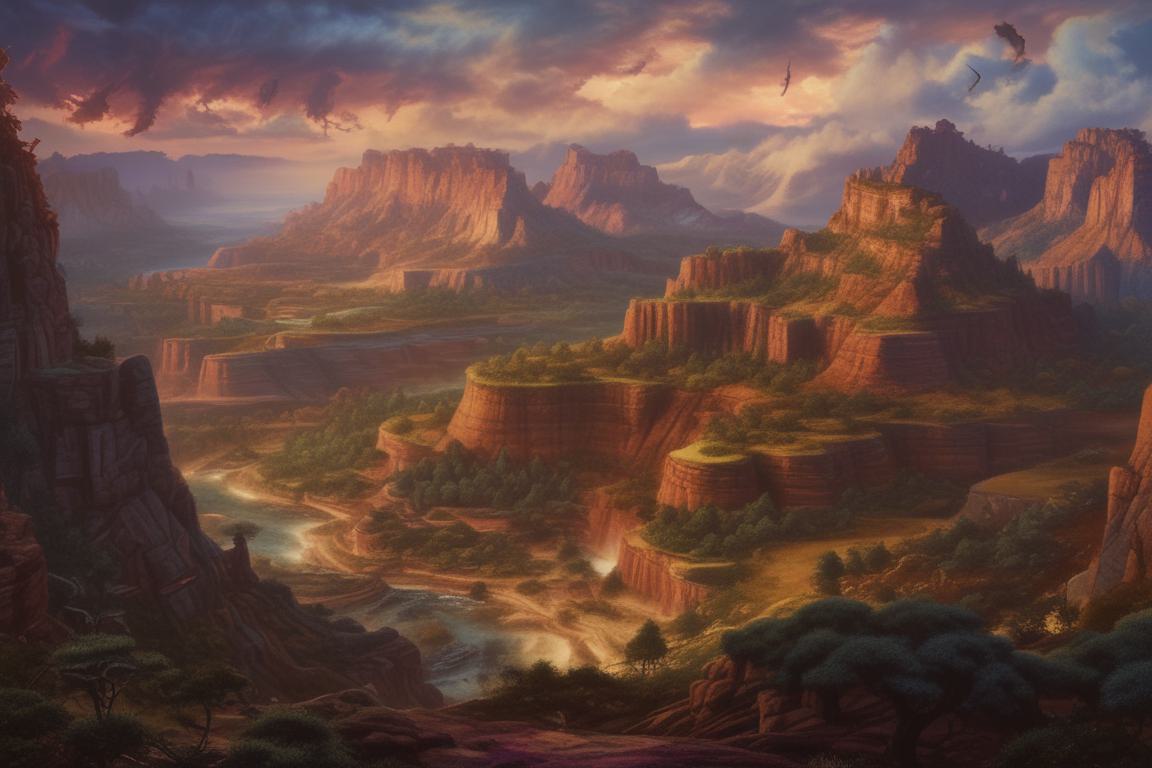Tartos
Tartos is a continent in the northeast of Fyrra. Over the course of the centuries, it has been populated by many different cultures and societies. After the Emergence of Don'vur, Tartos has been mainly inhabited by draconic societies and is sometimes also referred to as the draconic world.
Countries
Currently, Tartos is divided into different territories, ruled by one ore more draconic leaders:- Don’vur: the landmass that appeared on the 82nd of Water 1103 DC and which is almost exclusively inhabited by dragons
- Eydor
- Huatou: a rather isolated country, ruled by mainly blue and green dragons
- Korvyn Empire: a large draconic empire ruled by three elder red dragons
- Shivar: a kingdom led by ambitious green dragons
- Temyr
- Tropos
Climate and Geography
Tartos is most famous for its red soil, which spreads over most of the central and norther part of the continent. It is a prosperous land, covered in many lush tropical forests. The soil is highly fertile, resulting in a vast natural diversity. The continent has a warm to hot climate and average to humid air. Before the Emergence of Don’vur, Tartos was one big mass of land. Due to the impact of the emergence of the new landmass, the western part of Tartos was shattered and flooded, splitting it into many different island, commonly referred to as the Shattered Lands. Don’vur itself is a large, volcanic piece of land which is mostly infertile. It raises up from the surrounding area and can only be reached through the use of some sort of volitation or flight.Culture
A clear distinction needs to be made between Tartonian culture before and after the Emergence of Don’vur and the dragonsPre-draconic societies
Before the appearances of the dragons, Tartonian societies were highly divided into different human communities, that each had a strong sense of common individuality. Most communities considered themselves different from the others in their vicinity, albeit recognizing their common characteristics. Pre-draconian Tartonian societies consequently consisted of many city-states with strong common identities. Other than the city-states of other parts of the world, the ancient Tartonian city-states were more closed off. Strangers were considered suspicious and awkward at best and dangerous at worst. As a result, ancient Tartonians rarely relocated from the city they were born into. Thanks to the prosperous and expansive land, most communities were very self-sufficient and did rarely rely on trade or diplomacy. Alliances existed, but were mainly motivated by mutual appreciation and respect, rather than by greed or the need for survival. When faced with the need for foreign goods or manpower, the city-states either relied on their alliances or on the Dunarian Caravan Caravan. War was sparse, but not nonexistent and mostly occurred when resources were disputed. Due to the seemingly endless land, many territories remained unclaimed however, often diminishing the need for war.Draconic societies
After the appearance of the dragons, Tartonian societies were strongly influenced by the newly emerged dragons and their culture. Most city-states fell easily to the winged creatures advances due to the fragmented and isolated nature of the hundreds of individual communities, the many new monsters appearing from Don’vur and the widespread destruction as a result from the impact of the emergence. Current Tartonian societies are a mix of the draconic culture of Don’vur, the individual preferences of the leading dragons of a certain territory and the original local traditions of each city-state. Most of Tartos has been divided into different areas ruled by different dragons, which resulted in many individual city-states losing their individual cultural aspects, whilst simultaneously gaining a more common sense identity based on their draconic leaders and new draconic country. In this context, many individual ancient Tartonian traditions have been adapted and re-contextualized into the new societal order.Architecture
Tartonian architecture is characterized by ziggurats, pyramids and other triangle shaped forms. The core structures of Tartonian cities are often carved out of the local mountains and plateaus. The carved out stone is then used for the construction of houses and other buildings.
Even though the cities often are carved out stone, the insides of many Tartonian cities are largely open with large inside areas consisting of hundreds of markets and houses. Through ingenious use of mirrors and light artifacts, the insides of a Tartonian city are often as bright as the outside area on which the city is located.
Type
Continent




Comments